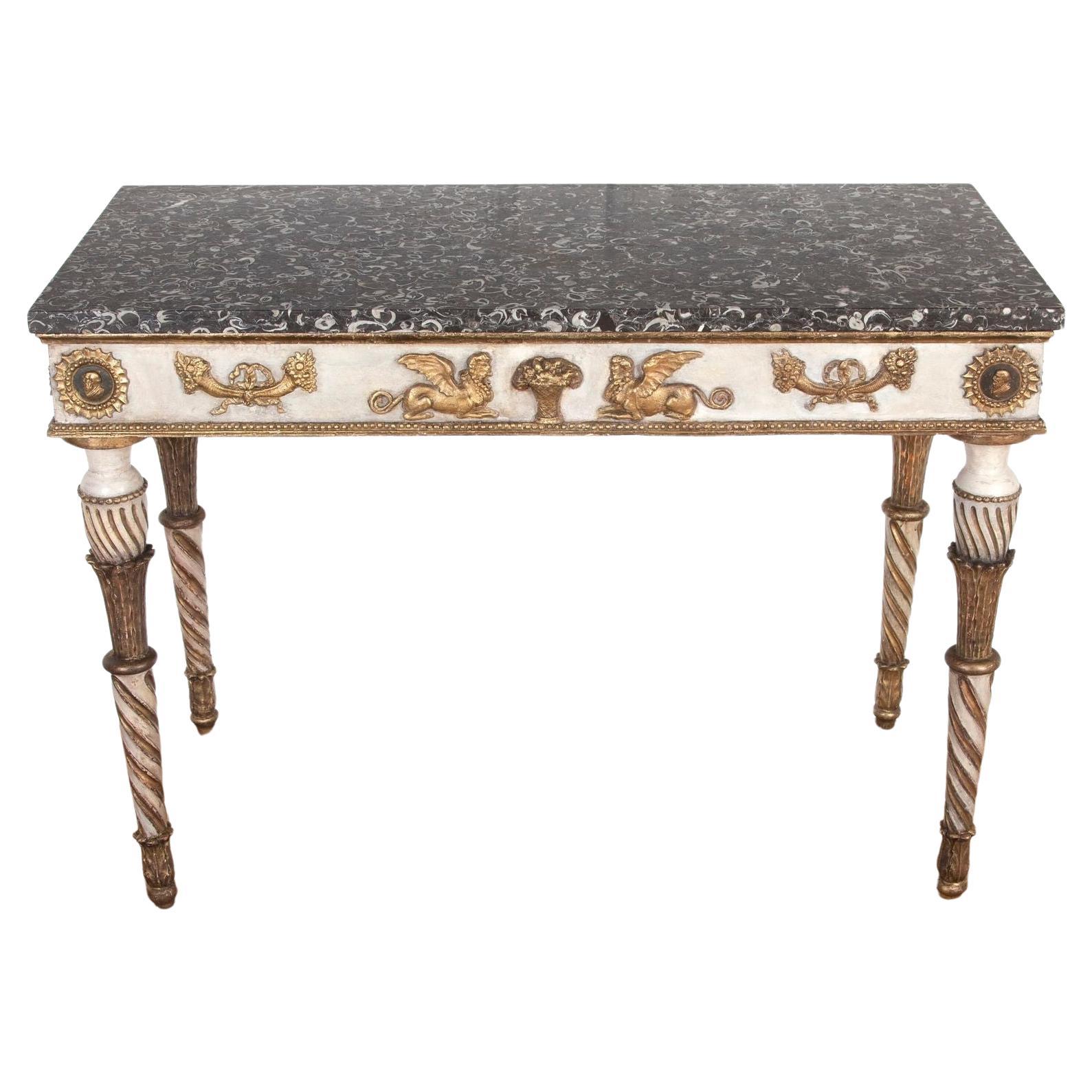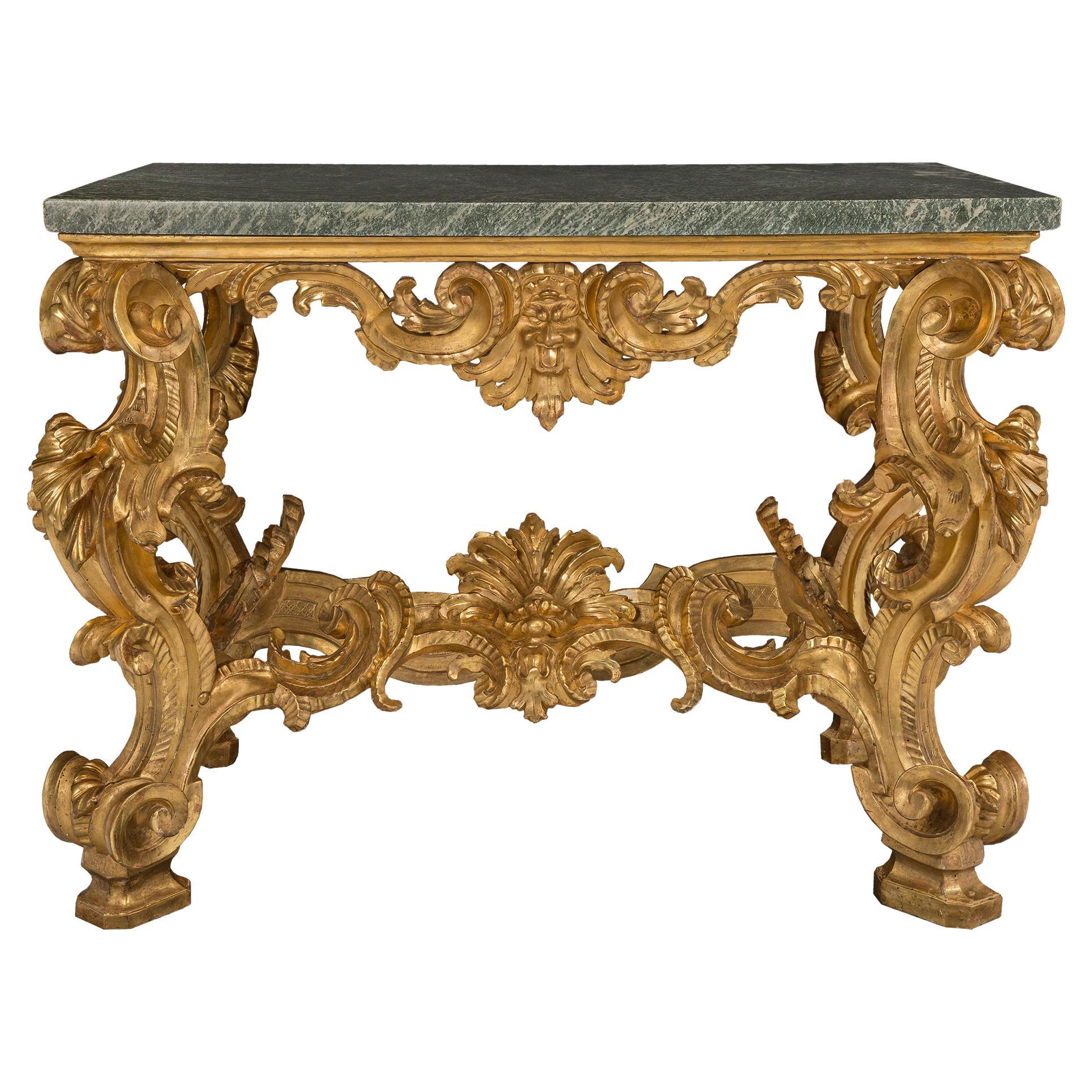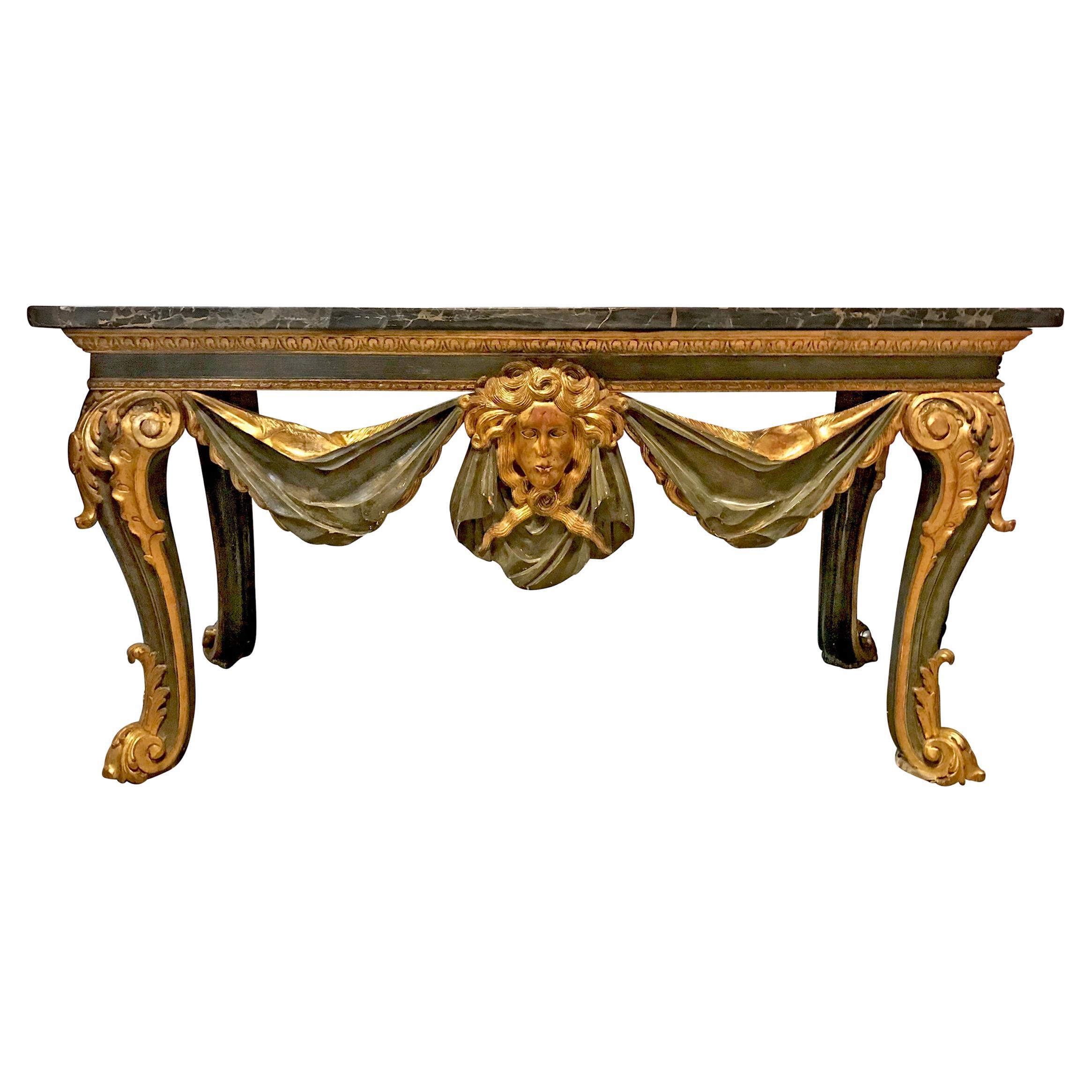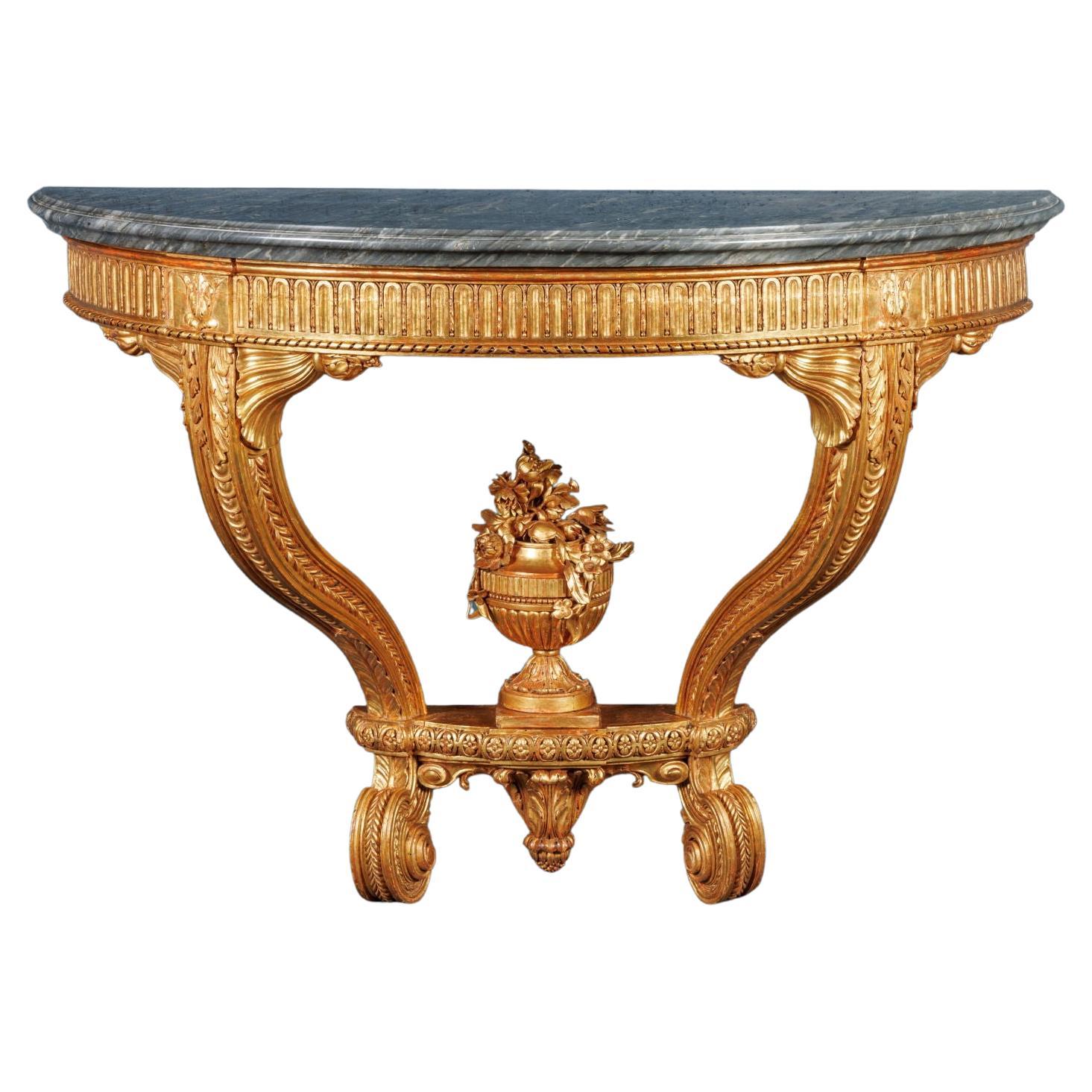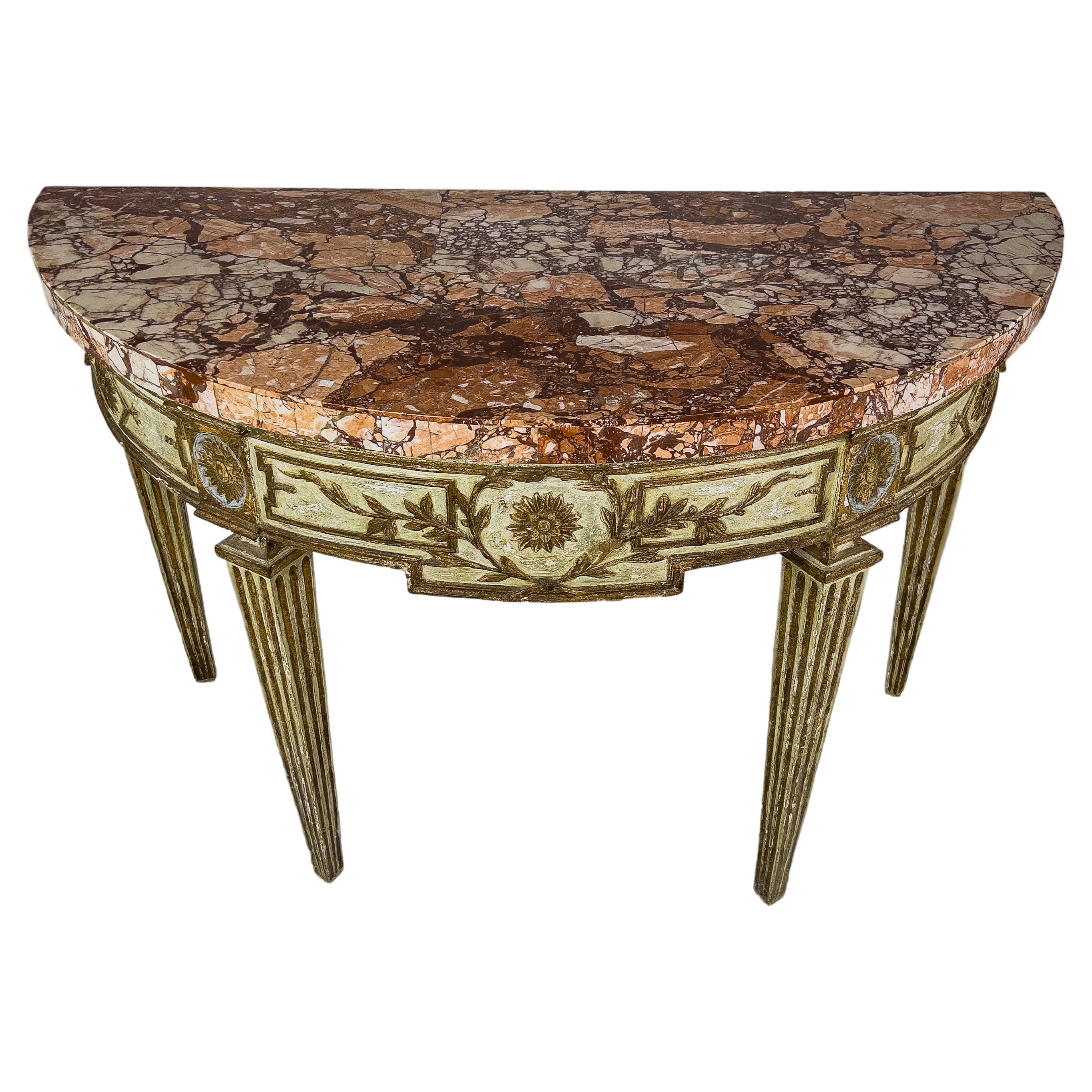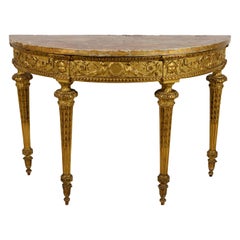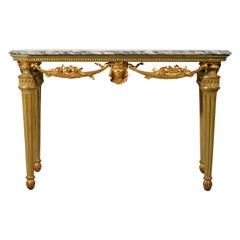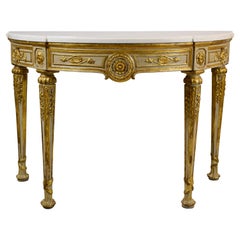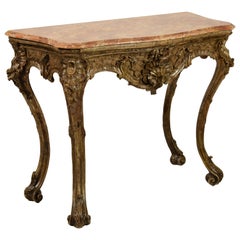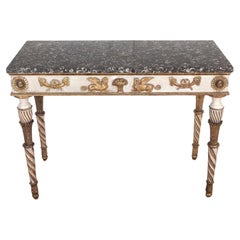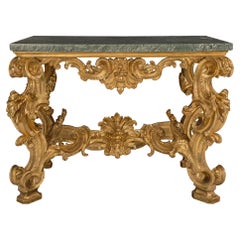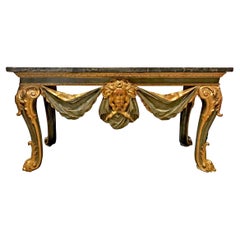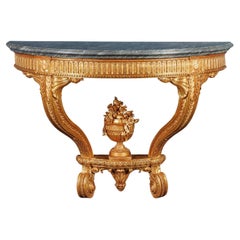Items Similar to 18th Century, Italian Neoclassical Demi-lune Wood Console by Francesco Bolgiè
Want more images or videos?
Request additional images or videos from the seller
1 of 21
18th Century, Italian Neoclassical Demi-lune Wood Console by Francesco Bolgiè
$66,230.25
£49,002.10
€55,000
CA$91,575.11
A$100,538.05
CHF 52,450.91
MX$1,216,650.31
NOK 657,390.77
SEK 619,434.95
DKK 418,771.54
About the Item
18th Century, Italian Neoclassical Demi-lune Wood Console attributed to Francesco Bolgiè
This fine and refined neoclassical console was built in the neoclassical era in Turin, Italy, towards the end of the eighteenth century. Elegantly sculpted according to the canons of high cabinet-making in Turin, it has evident stylistic proximity to the works of Francesco Bolgiè. The architectural structure of the console as a whole and, even more, some details, such as the thin roundels, acanthus leaves, lion heads, are characteristic of the works of the master sculptor.
It has a demi-lune top in green Alpi marble with a moulded profile. The underside band is bounded on the top by a frame in gilded wood carved with foliar motifs and a smooth lower reserve, while the reserve in smooth gilded wood is followed by a frame carved with a semisphere pattern. The central band is in lacquered wood with very refined carvings in the shape of sunflowers and phytomorphic elements of classical taste. The shade of the lacquer, blue grey, is characteristic of the Piedmontese area, chosen for the furnishings but also in the historic buildings. Near the four legs the band is decorated with gilded wood carvings with high relief depicting lion heads that hold up with elegant drapes that gently fall down. At the center of the band is carved a large flower with a circular corolla to which the draperies converge intertwining.
The four legs originate from a capital in lacquered wood in light blue with golden decorations of circular shape. The legs also have a rich carving in the shape of golden acanthus leaves from which the truncated trunk of inverted cone branches, lacquered and gilded in the grooves. At the bottom, new acanthus leaf carvings and circular foot with lacquered and gilded wooden toe cap conclude the legs.
The artistic personality of the "Royal wood sculptor" Francesco Bolgiè (Turin 1752-1834) is at the top of the Turin wooden sculpture in the last quarter of the eighteenth century and in the first decades of the nineteenth century and has played a very important role in neoclassical decorative wood carving. An artist of equal stature to Giuseppe Maria Bonzanigo, he remained in the shadows for a long time. Many of his works were in fact attributed to Bonzanigo on the basis of stylistic comparisons, in the absence of accurate archival research. The corpus of archival documents found has allowed, in recent years, to outline the figure of this important sculptor carver, reconstructing his life and allowing to return to his catalog several works, many of which are still preserved in the Royal Palace of Turin and in the Hunting Palace of Stupinigi, others in famous private collections.
- Attributed to:Francesco Bolgié (Cabinetmaker)
- Dimensions:Height: 36.23 in (92 cm)Width: 51.19 in (130 cm)Depth: 25.99 in (66 cm)
- Style:Neoclassical (Of the Period)
- Materials and Techniques:
- Place of Origin:
- Period:
- Date of Manufacture:Late 18th Century
- Condition:Wear consistent with age and use.
- Seller Location:IT
- Reference Number:1stDibs: LU4405243719792
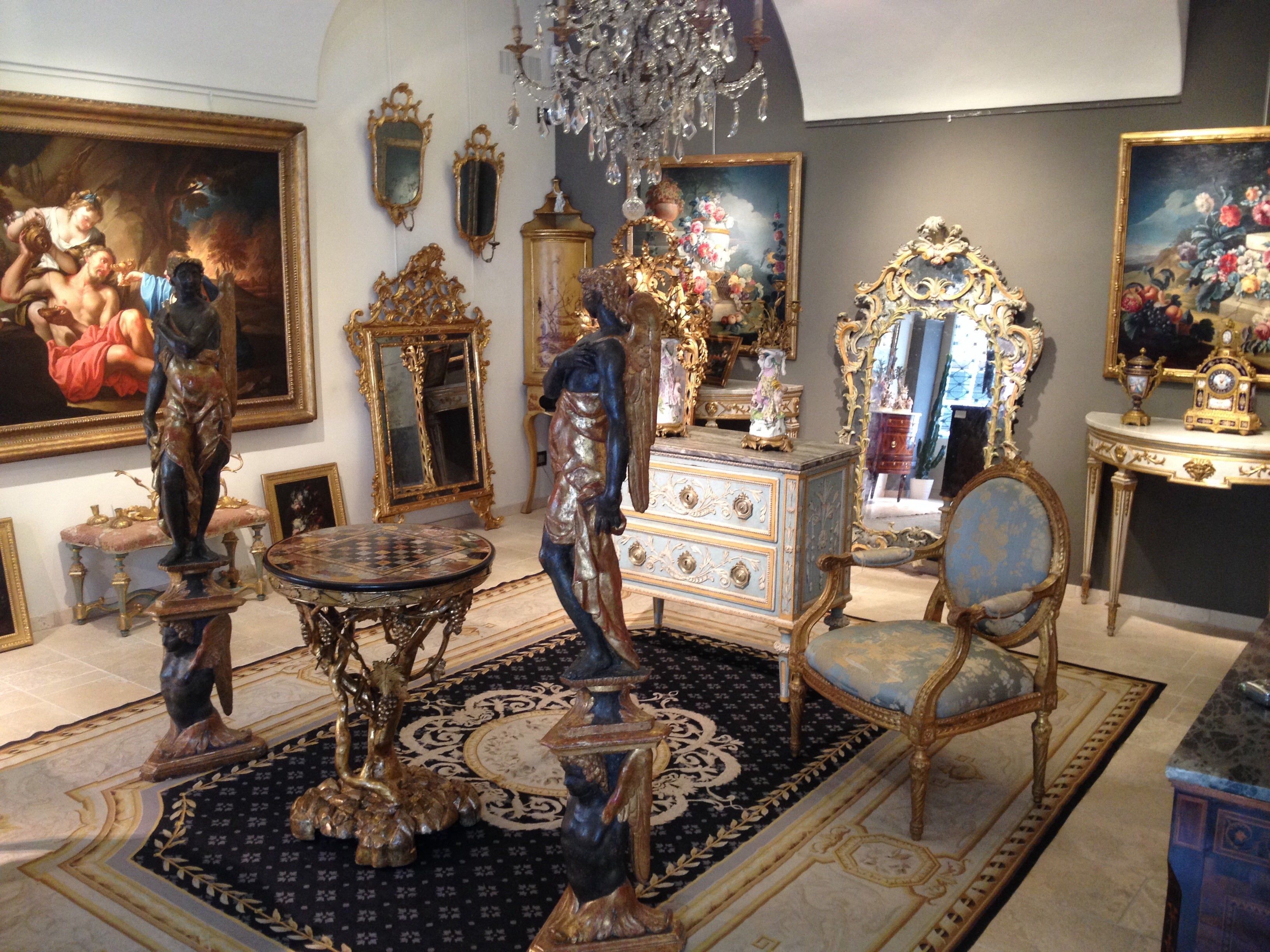
About the Seller
5.0
Platinum Seller
Premium sellers with a 4.7+ rating and 24-hour response times
Established in 1980
1stDibs seller since 2019
56 sales on 1stDibs
Typical response time: 1 hour
- ShippingRetrieving quote...Shipping from: Italy
- Return Policy
Authenticity Guarantee
In the unlikely event there’s an issue with an item’s authenticity, contact us within 1 year for a full refund. DetailsMoney-Back Guarantee
If your item is not as described, is damaged in transit, or does not arrive, contact us within 7 days for a full refund. Details24-Hour Cancellation
You have a 24-hour grace period in which to reconsider your purchase, with no questions asked.Vetted Professional Sellers
Our world-class sellers must adhere to strict standards for service and quality, maintaining the integrity of our listings.Price-Match Guarantee
If you find that a seller listed the same item for a lower price elsewhere, we’ll match it.Trusted Global Delivery
Our best-in-class carrier network provides specialized shipping options worldwide, including custom delivery.More From This Seller
View All18th Century, Italian Neoclassical Carved Giltwood Demi-lune Console
Located in IT
18th Century, Italian Neoclassical Carved Giltwood Half-moon Console
This elegant console was built in Rome, in Italy, in the neoclassical era at the end of the eighteenth century.
Demi-lune shaped, it has a top composed of a slab in Sicilian jasper marble on a white marble base that in its height is covered with gold leaf.
The wooden structure has a gilding leaf that to create movement and shine has the details in relief polished with agate stone, while the backgrounds are cushioned with a burin treatment. The wood is finely carved with motifs characteristic of neoclassicism. The band below the floor has an egg frame...
Category
Antique Late 18th Century Italian Neoclassical Console Tables
Materials
Marble
$42,447 Sale Price
25% Off
18th Century, Italian Neoclassical Lacquered and Gilt Wood Console Table
Located in IT
18th century, Italian neoclassical lacquered and gilt wood console table
This elegant console was made in Italy in the Neoclassical era, in the second half of the eighteenth cent...
Category
Antique Late 18th Century Italian Neoclassical Console Tables
Materials
Marble
18th Century, Italian Neoclassical Lacquered and Giltwood Console Table
Located in IT
Italian neoclassical half-moon lacquered and giltwood console table with white marble top
Italy, Naples, 18th century
This elegant console table, in finely carved, lacquered and ...
Category
Antique Late 18th Century Italian Neoclassical Console Tables
Materials
Wood, Giltwood
18th Century, Italian Naples Baroque Carved Wood Console
Located in IT
18th century, Italian Naples baroque carved wood console
This console made of richly carved and gilded with “Mecca” wood, is a characteristic example...
Category
Antique Mid-18th Century Italian Baroque Console Tables
Materials
Wood, Giltwood
18th Century, French Louis XV Lacquered and Gilt Wood Console
Located in IT
18th Century, French Louis XV Lacquered and Gilt Wood Console
This elegant console was crafted in the Louis XV period, 18th century, in France. It features a top with a shaped profi...
Category
Antique Mid-18th Century French Louis XV Console Tables
Materials
Wood, Giltwood
18th Century, Italian Rococo Wood Console Table
Located in IT
18th Century, Italian Rococo Elm Wood Console Table
Dimensions: W 92 x D 53.5 x H 71.5
This console table was made in Northern Italy during the Barocchetto period, in the mid-18th ce...
Category
Antique Mid-18th Century Italian Rococo Console Tables
Materials
Wood
You May Also Like
18th Century Italian Console Table
Located in Gloucestershire, GB
Wonderful 18th century Roman console table.
With hand turned and carved legs and original gilding and period paint.
This fabulous console is embellished with decorative Spinx and R...
Category
Antique 18th Century Italian Neoclassical Console Tables
Materials
Marble
Italian Early 18th Century Louis XIV Period Freestanding Console
Located in West Palm Beach, FL
A sensational and high quality Italian late 17th century early 18th century Louis XIV Period giltwood and marble freestanding console from Rome. This superb console is raised by hand...
Category
Antique 18th Century Italian Louis XIV Console Tables
Materials
Marble
Grande 19th Century Italian Marble-Top Console Table
Located in Chicago, IL
A grand 19th century Italian marble-top console table with an apron carved of wood to mimic a swaged cloth and large classical face in the centre, all painted a wonderful museum oliv...
Category
Antique 19th Century Italian Baroque Console Tables
Materials
Marble
Applique Console Francesco Bolgiè, Turin, circa 1790
By Francesco Bolgié
Located in Milano, IT
Wall table supported by two legs moved to “S”, connected to the band under the top by carved shelves; grey marble top molded on the edge.
The band is carved with pods and finished with a ribbon frame. The uprights end with two curly feet, which are carved on the four faces with overlapping circles and plant motifs; above the feet, a small shelf connects the two uprights. It is carved by a Greek fret with rosettes, surmounted by a classic vase with flowers and finished in the lower part by a leafy head. The whole surface is gouache-gilded.
The piece of furniture presented here is to be referred to the Turin production and in particular to the work of Francesco Bolgiè, since the points of contact with his work are stringent. Born in Turin in 1752 to a family of carvers, after a Parisian training, he was a member of the Compagnia di San Luca in 1775 and appointed Royal Sculptor by Vittorio Amedeo, the first of all carvers to obtain this title.
After Bonzanigo, Bolgè is the most desired artist at the Savoy court and, although his fame was overshadowed by the greatness of the first, he was a carver of great ability, it is not true that the authorship of the two productions have often been confused. The inventories show that if Bonzanigo was much more used for the production of chairs, screens and frames that required more minute carving, it was mainly Bolgè who was entrusted with the production of furniture and consoles.
Entering into the console analyzed here, the first stringent comparison is to be made with the four corner cabinets created for Madama Felicita’s apartment in the Royal Palace. The “S” -shaped legs have the same curl as the foot placed here under the top and the frontal notch of the uprights is identical. The closeness between the carved vase of the console and those placed on the top and between the legs of the corner cabinets cannot be overlooked, even if ours, being placed in a prominent position, is richer and more elaborate. It is possible to find the same curl pattern as a shelf used...
Category
Antique 1790s Italian Other Console Tables
Materials
Marble
18th c. Italian Console with Marble Top
Located in Houston, TX
18th century Italian demilune console with original paint, gilt detail, straight tapered legs and marble top. From Napoli, Italy.
Category
Antique 18th Century Italian Neoclassical Console Tables
Materials
Marble
19th Century Neo-Classical Console Table
By Robert Adam
Located in Shipston-On-Stour, GB
A fabulous mid C19th neo-classical semi elliptical carved giltwood console/side table, finished in gilt and colourful decoration, after a design by Robert Adam. The colourful marbl...
Category
Antique 1830s English Neoclassical Console Tables
Materials
Marble
More Ways To Browse
Neoclassical Wood Carving
3 Tier Console Table
Aldo James
Allesandro By Baker
Amorph Frolic Console
Aqua Console
Blonde Wood Console
Bluestone Top Console
Bobbin Leg Console Table
Bobbin Leg Console
Bronze Console Giacometti
Brueton Tee Console
Butcher Block Console
Cabriole Leg Black Table
Chinese Narrow Console Tables
Circle Console Table
Console Leopard
Console Table On Wheels
